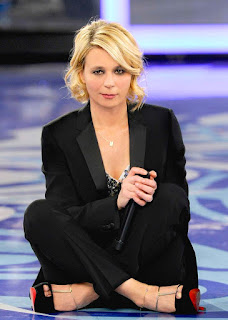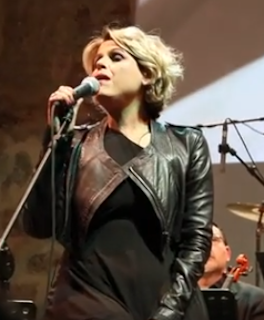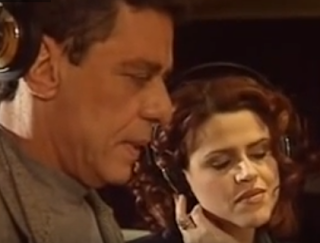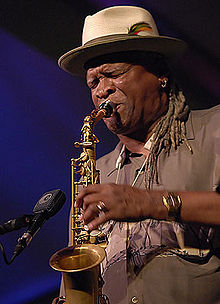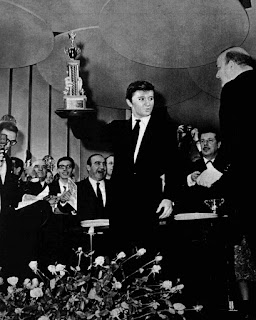X-Factor victory was launchpad to stardom
 |
| Marco Mengoni won Italy's The X-Factor in 2009 |
Mengoni triumphed in the 2009 edition - the third series of X-Factor on the public service channel Rai Due before it was bought up by subscription channel Sky Italia - during which he unveiled what would be his debut single, Dove si vola, which he sang for the first time at the semi-final stage.
The single, an example of the sophisticated pop-rock style that would become Mengoni’s trademark, reached number one in the Italian downloads chart while a seven-track extended play album of the same name sold 70,000 copies, peaking at nine in the Italian albums chart.
Mengoni’s performances on The X-Factor had received favourable comments from both Mina and Adriano Celentano, the all-time bestselling artists in Italian popular music history.
 |
| Marco Mengoni in a presentation video for his hit single L'essenziale, his Sanremo winner and Eurovision entry |
His first full-length solo album, Solo 2.0, went straight to number one in the Italian albums chart when it was released in September 2011. Whereas he had previously sung mostly compositions written by others, the tracks on Solo 2.0 were almost all co-written by Mengoni.
After spending much of 2012 touring, Mengoni entered Sanremo again in 2013 and this time won, with L’essenziale, which he wrote in collaboration with Roberto Casalino and Francesco De Benedettis.
 |
| Mengoni at a press conference ahead of his performance at the 2013 Eurovision |
The song was also selected as Italy’s entry for the 2013 Eurovision Song Contest in Malmo, Sweden. Mengoni finished seventh - well behind the winner, Denmark’s Emmelie de Forest (Only Teardrops) - but the song caught the imagine of viewers and gained him many new fans outside Italy.
Since then, Mengoni has released three more studio albums - Parole in circolo and Le cose che non ho in 2015 and, this autumn, Atlantico - plus a live album, Marco Mengoni Live, a 2016 double album that included five previously unreleased studio tracks.
Atlantico has been top of the Italian album chart for four weeks, giving Mengoni a Christmas number one.
Mengoni grew up in Ronciglione, which is about 60km (37 miles) north of Rome, near Lago di Vico. At the age of 14, while a design student at secondary school, he took singing lessons. He soon tasted the experience of singing before an audience after his teacher invited him to join a vocal quintet which performed in piano bars and clubs.
 |
| The cover of Mengoni's Le cose che no ho, his third studio album |
Among Mengoni’s other achievements, he was the first Italian artist to win Best European Act at the MTV Europe Music Awards - in 2010 and 2015 - and the first Italian artist to perform at the Billboard Film & TV Music Conference in Los Angeles, in 2013.
Today, Mengoni lives in Milan. In 2019, he embarks on a 16-date European tour, between April and May, beginning with shows in Germany, Switzerland and France, following by 12 appearances in Italy. On May 25 and 26 he is scheduled to perform at the Arena di Verona, the Roman amphitheatre that has become one of Italy’s most prestigious concert venues.
 |
| The quaint medieval area of Ronciglione, Mengoni's home town in Lazio |
Ronciglione, known locally as Ronció, is a town about 20km (12 miles ) from Viterbo located in the Cimini mountains, on the southeast slope of the former volcano crater now housing Lake Vico. The main sights include a well-preserved medieval centre, a castle originally built in the middle ages, with characteristic angle rounded towers, and a Baroque cathedral designed by Pietro da Cortona, rebuilt by Carlo Rainaldi between 1671 and 1695. The bell tower is from 1734. The cathedral houses a Tryptych of Christ by the Viterbese painter Gabriele di Francesco. Ronciglione is known for its carnival and the Palio of the Manna, which features riderless horses competing for each of nine contrade (parishes).
 |
| The Arena di Verona is now a major venue for both opera performances and music concerts |
The Arena di Verona in Piazza Bra is a wonderful surviving example of a first-century Roman amphitheatre, which has now become a famous location for large-scale, outdoor productions of opera each summer. The arena was built in in AD 30 on a site which was then beyond the city walls. It could host more than 30,000 spectators in ancient times, double the capacity permitted today. It was thanks to the enthusiasm of the tenor Giovanni Zenatello and the impresario Ottone Rovato in the early part of the 20th century that operatic performances became the arena’s staple. They put on a staging of Giuseppe Verdi's Aida in August 1913, to mark the birth of Verdi 100 years before in 1813. Musical luminaries such as Puccini and Mascagni were in attendance and since then summer seasons of opera have been mounted continually at the arena, apart from during the war years.
More reading:
Why Adriano Celentano is Italy's all-time biggest-selling star
Mina - the Italian icon who defied convention
The enduring talent of Eros Ramazzotti
Also on this day:
Natale - Christmas Day
800: Charlemagne crowned Holy Roman Emperor
1874: The birth of soprano Lina Cavalieri
Home


